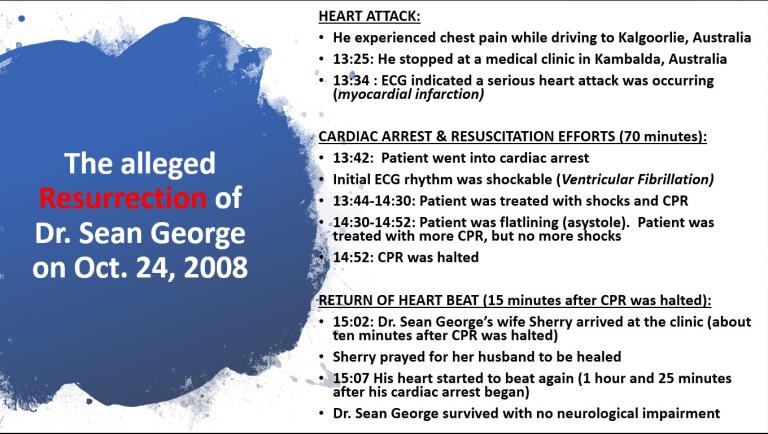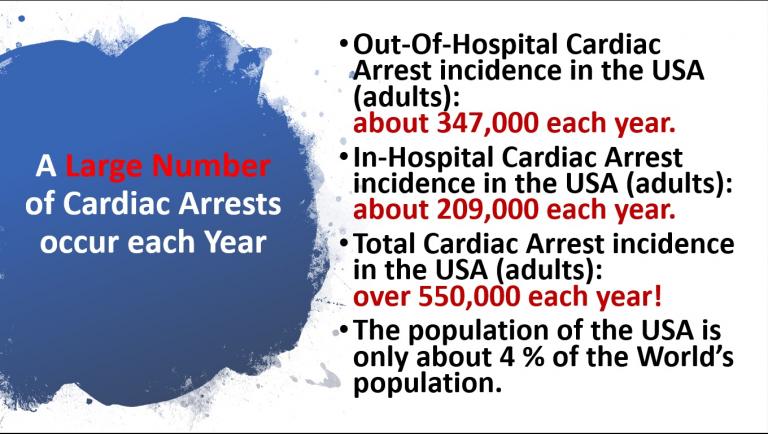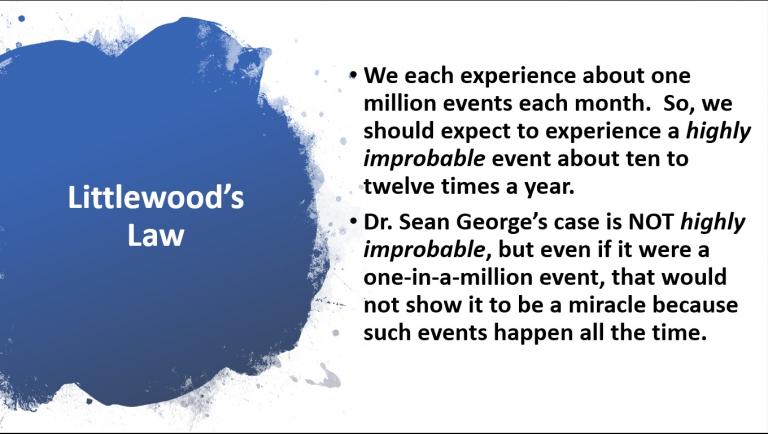The Resurrection of Dr. Sean George – Part 2: Littlewood’s Law
Dr. Sean George claims that God raised him from the dead.
I have prepared a PowerPoint presentation called “The Resurrection of Sean George” which contains lots of relevant information and skeptical points about Dr. Sean George’s miracle claim. Here at The Secular Outpost, I plan to present my main objections to his miracle claim.
The following is a summary of Dr. Sean George’s alleged resurrection:
One of my primary objections to this miracle claim is that there are millions of cardiac arrests in the world each year, so we should expect for there to be some very rare outcomes of cardiac arrests to occur each year. A one-in-a-million outcome to a cardiac arrest should be expected to occur at least once or twice each year. Therefore, if Dr. Sean George’s outcome was a one-in-a-million outcome, then it is unreasonable to conclude that it was a miracle, because we would reasonably expect such outcomes to occur somewhere in the world once or twice each year, even if there is no God and there are no miracles.
(This data is from: Heart Disease and Stroke Statistics—2019 Update
A Report From the American Heart Association, Chapter 17, “Incidence”).
The population of the USA is about 4% of the world’s population. Since about half a million cardiac arrests occur each year in the USA, there must be millions of cardiac arrests in the world each year. If, for example, cardiac arrests in the USA constitute 10% of the cardiac arrests in the world, then there would be about five million cardiac arrests in the world each year.
An estimate from a 2007 medical journal (Journal of Electrocardiology) article shows that my back-of-the-envelope estimate is not far off the mark:
Cardiovascular disease is a leading cause of global mortality, accounting for almost 17 million deaths annually or 30% of all global mortality. In developing countries, it causes twice as many deaths as HIV, malaria and TB combined. It is estimated that about 40-50% of all cardiovascular deaths are sudden cardiac deaths (SCDs) and about 80% of these are caused by ventricular tachyarrhythmias. Therefore, about 6 million sudden cardiac deaths occur annually due to ventricular tachyarrhythmias. The survival rate from sudden cardiac arrest is less than 1% worldwide and close to 5% in the US. (from an abstract for the article “Global public health problem of sudden cardiac death.” https://www.ncbi.nlm.nih.gov/pubmed/17993308 , emphasis added)
NOTE: “Sudden cardiac death (SCD) is a sudden, unexpected death caused by loss of heart function (sudden cardiac arrest).”
- 40% of 17 million is: 6.8 million
- 50% of 17 million is: 8.5 million
So, there are between 6.8 million and 8.5 million sudden cardiac deaths in the world each year. If SCDs represent 99% of cardiac arrests (because 1% of people with a cardiac arrest survive), then there are between 6.9 million and 8.6 million cardiac arrests in the world each year, or 7.75 million cardiac arrests (plus or minus .85 million).
My skeptical objection here is basically an application of Littlewood’s Law:
“The law was framed by Cambridge University Professor John Edensor Littlewood, and published in a 1986 collection of his work, A Mathematician’s Miscellany. It seeks among other things to debunk one element of supposed supernatural phenomenology and is related to the more general law of truly large numbers, which states that with a sample size large enough, any outrageous (in terms of probability model of single sample) thing is likely to happen.” (“Littlewood’s Law, Wikipedia: https://en.wikipedia.org/wiki/Littlewood%27s_law )
Given the above information, the only thing necessary to dismiss Dr. Sean George’s miracle claim, is to show that the outcome of his cardiac arrest had at least one chance in ten million of occurring. Since, about 8 million cardiac arrests occur in the world each year, we should expect to see such a rare outcome about once every year or two, even if there is no God, and there are no miracles.
To Be Continued…



